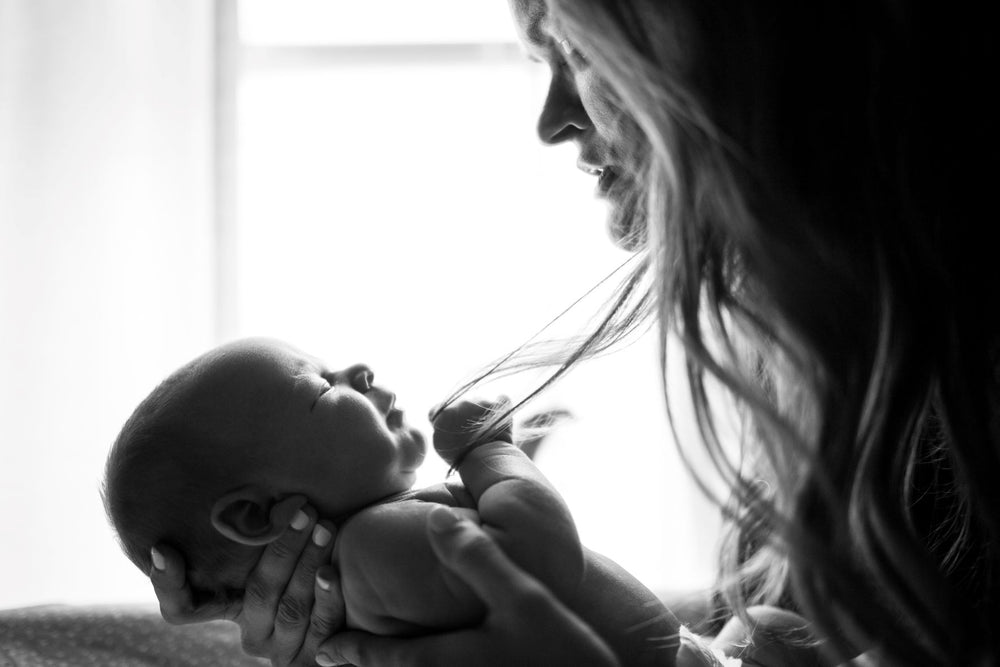It may be considered one of the most common perinatal mental health disorders, but postpartum depression is only one of many mood-related disturbances surrounding pregnancy and childbirth—collectively known as perinatal mood and anxiety disorders (PMADs). “What this term recognizes is that these conditions can occur at any point during and after pregnancy, and that they can be more than depression,” says Catherine Birndorf, MD, a reproductive psychiatrist and cofounder of the Motherhood Center in New York City. Occurring up to a year after birth, PMADs are caused by a complex mix of biological, psychological, and social factors, says Birndorf, including the intense physical and psychological stress that goes along with having a baby. Sometimes a woman will experience several simultaneously. That’s the bad news. The good news is that once you recognize them, you can get treatment.
“I can’t drag myself out of bed, but I can’t sleep.”
Postpartum Depression (PPD)
Affecting approximately one in ten new mothers, postpartum depression “looks a lot like what we think of as depression,” says Jessica Latack, PhD, a clinical psychologist with a focus on women’s mental health and a clinical assistant professor of psychology at Weill Cornell Medical College in New York City. “In the postpartum period, there is often an anxious agitation to it, like you want to jump out of your skin.” Symptoms include irritability, mood swings, frequent crying, fatigue, sleep disturbances, and changes in appetite. Postpartum depression is distinct from the baby blues—the short-lived mood fluctuations that the majority of women experience in the days after giving birth—and tends to worsen over time.
“What if something happens to the baby? I’ll never forgive myself.”
Postpartum Anxiety (PPA)
There is a lot of overlap between postpartum anxiety and postpartum depression, says Latack—research suggests there’s a 75 percent comorbidity rate between the two. What distinguishes postpartum anxiety, however, is an intense undercurrent of worry, like “you can’t turn your brain off,” says Latack. The symptoms include difficulty concentrating, irritability, trouble sleeping, and thoughts that are uncontrollable and sometimes disturbing. You may get these horrible images about what could go wrong and feel this impending sense of doom, says Latack. Like with any anxiety disorder, you could experience physical effects, too, including racing heart, GI upset, and sweaty palms.
“I can’t leave the side of the crib because I’m afraid to leave the baby alone for even a minute.”
Postpartum Obsessive Compulsive Disorder (PPOCD)
A close relative of postpartum anxiety, postpartum OCD is thought to affect over 15 percent of new mothers, according to recent research. While postpartum anxiety is associated with worry, postpartum OCD is associated with a specific type of worry: intrusive and obsessive thoughts, usually about the baby. “Often women will have compulsions related to these thoughts, whether that’s washing the baby all the time or checking to make sure the baby is breathing every two minutes,” says Latack. Like all PMADs, while a history of the disorder increases the likelihood of a postpartum episode, it can also happen for the first time during this period.
“I can’t stop thinking about hurting myself and the baby.”
Postpartum Psychosis (PPP)
The rarest of the perinatal mood and anxiety disorders, postpartum psychosis affects 1 to 2 out of every 1,000 deliveries. While other PMADs tend to gradually intensify in the weeks following birth, postpartum psychosis comes on quickly in the days after birth and is considered an emergency. “If someone has psychosis, they typically need to go into in-patient [care] very quickly. This is not something that can be managed as an outpatient therapy,” says Latack, adding that “if psychosis seemingly comes from out of the blue in postpartum, I’d say it’s bipolar until proven otherwise." Symptoms include those of a psychotic episode—delusions, hearing voices—and of a more general mood disturbance like depression, and patients may cycle between both states rapidly, says Latack. Like postpartum OCD, a person may experience disturbing thoughts and images. “Women with postpartum OCD tend to be very aware that the thoughts they are having are irrational,” says Latack.
“I can’t stop having nightmares in which I lose the baby at birth.”
Postpartum Post-Traumatic Stress Disorder (PPTSD)
A form of postpartum anxiety, postpartum PTSD affects approximately 9 percent of new mothers and results from real or perceived trauma during delivery or postpartum. “It typically happens when the mother is concerned for the life or well-being of her baby or herself,” says Latack. For example, if the baby experiences heart decelerations during labor. “That might well be something that can be easily medically managed and often is, but it’s still terrifying,” says Latack. Symptoms include flashbacks or nightmares about the birth, panic attacks, and avoidance of reminders about the birth. While anyone can experience postpartum PTSD, women with previous trauma are at a higher risk as “they can re-experience their old trauma around the time of delivery,” says Birndorf.
“I’m furious all the time, yelling at my baby and husband.”
Postpartum Rage
Postpartum rage isn’t a clinical diagnosis, but rather a symptom that can be experienced within the context of other perinatal mood and anxiety disorders. According to Latack, it’s a phenomenon that is often overlooked in the postpartum period, though it’s getting more attention now and is very much part of the emotional landscape. You may experience intense anger that makes you feel like you’re out of control. “These rageful moments can look like you yelling at your baby or fantasizing about shaking the baby, and then [you] feel extremely guilty about it later,” says Latack.
How to Get Help
These conditions do not necessarily resolve on their own, and people experiencing them would benefit from psychiatric treatment. Still, many women suffer in silence—sometimes for years. “Plenty of people that I evaluate on a second or third pregnancy say, ‘Oh, my gosh, I had this with my first, but I didn't even know it’ or ‘I had it and I didn’t get treated and it has never really gone away.’ Many people just live with the lingering illness,” says Birndorf.
The good news is that telehealth, which grew exponentially during the pandemic, has made recovery less complicated. “I’ve seen with my own practice much better attendance and adherence to treatment because it’s so much easier to do it [virtually] rather than schlepping to my office with a baby or finding childcare,” says Latack. The resources below make it even easier.
If you don’t where to begin:
Postpartum Support International
Search for a perinatally informed provider in your area or call a 24/7 hotline for help.
If you’re worried about affordability:
Open Path Psychotherapy Collective
Find affordable therapists—for in-person and virtual sessions.
If you’re considering medication:
Get the most up-to-date information on contraindications for pregnant and nursing mothers.






